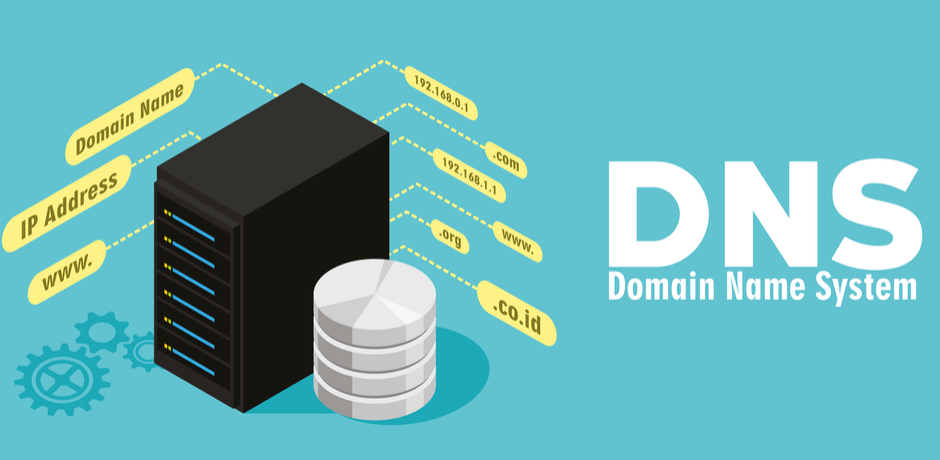Whom can you trust?
Most hobbyists and IT administrators setup a DNS (Domain Name System) as part of their networks. But most will be setup as caching and forwarding DNS server. When a client sends a request to the local DNS it will check its own cache, and if it ins't in there it forwards requests made by the clients to configured upstream DNS server(s). However this leads to some privacy concerns as it ultimately raises the question: Whom can you trust? Recently, more and more small (and not so small) DNS upstream providers have appeared on the market, advertising free and private DNS service, but how can you know that they keep their promises? Right, you can't.
Furthermore, from the point of an attacker, the DNS servers of larger providers are very worthwhile targets, as they only need to poison one DNS server, but millions of users might be affected. Instead of your bank's actual IP address, you could be sent to a phishing site hosted on some island.
When you operate your own (tiny) recursive DNS server, then the likeliness of getting affected by such an attack is greatly reduced.
What is a recursive DNS server?
The first distinction we have to be aware of is whether a DNS server is authoritative or not. If I'm the authoritative server for, e.g., wijman.net, then I know which IP is the correct answer for a query. Recursive name servers, in contrast, resolve any query they receive by consulting the servers authoritative for this query by traversing the domain.
Example: We want to resolve wijman.net. On behalf of the client, the recursive DNS server will traverse the path of the domain across the Internet to deliver the answer to the question.
A standard DNS installation will do it as follows
- Your client will ask the DNS who is
wijman.net? - The DNS will check the local cache and will reply if the answer is known.
- If the local cache doesn't have any records it will forward it to the configured external upstream DNS server(s).
- After receiving a response from the upstream DNS server it will forward the response to the client.
- Additionally it will add it to its own internal cache for future requests.
A recursive DNS installation will do it as follows
- Your client will ask the DNS who is
wijman.net? - The DNS will check the local cache and will reply if the answer is known.
- If the local cache doesn't have any records it will forward it to the (local) recursive DNS resolver.
- The recursive DNS resolver will ask the DNS root servers who is handling
.net? - The root server answers with a referral to the TLD servers for
.net. - The recusive DNS resolver will then ask the TLD server who is handling
wijman.net? - The TLD server answers with a referral to the authoritative name servers for
wijman.net. - The recursive DNS resolver will then ask the authoritative name servers what is the IP for
wijman.net? - The authoritative name server will respond with the Ip address(es) for
wijman.net. - The recursive DNS resolver will reply to the DNS server, which in turn will reply to your client.
- Lastly the DNS server will cache the response to be able to respond faster if any of your clients queries the same domain again.
With sub-domains the chain will be longer to complete as the query process continues until your recursive resolver reaches the authoritative server for the zone that contains the queried domain name. This method is obviously different than "just" asking an external upstream DNS server.
Using a recusive DNS resolver has benefits and drawbacks:
Benefit: Privacy - as you're directly contacting the responsive servers, no server can fully log the exact paths you're going, as e.g. the Google DNS servers will only be asked if you want to visit a Google website, but not if you visit the website of your favorite newspaper, etc.
Drawback: Traversing the path may be slow, especially for the first time you visit a website - while the bigger DNS providers always have answers for commonly used domains in their cache, you will have to transverse the path if you visit a page for the first time. The first request to a formerly unknown TLD may take up to a second (or even more if you're also using DNSSEC). Subsequent requests to domains under the same TLD usually complete in < 0.1s. Fortunately, both your DNS server as well as your recursive server will be configured for efficient caching to minimize the number of queries that will actually have to be performed.
Setup a recursive DNS service (next to the DNS service)
Most deployments use bind or dnsmasq for their DNS service. We will use unbound, a secure open-source recursive DNS server primarily developed by NLnet Labs, VeriSign Inc., Nominet, and Kirei. This will run in parallel with either of the mentioned DNS services.
The first thing you need to do is to install the recursive DNS resolver:
sudo apt install unbound
If you are installing unbound from a package manager, it should install the root.hints file automatically with the dependency dns-root-data. The root hints will then be automatically updated by your package manager.
Optional: Download the current root hints file (the list of primary root servers which are serving the domain "." - the root domain). Update it roughly every six months. Note that this file changes infrequently. This is only necessary if you are not installing unbound from a package manager. If you do this optional step, you will need to uncomment the root-hints: configuration line in the suggested config file.
wget https://www.internic.net/domain/named.root -qO- | sudo tee /var/lib/unbound/root.hints
Configure unbound
Highlights:
- Listen only for queries from the local Pi-hole installation (on port 5335)
- Listen for both UDP and TCP requests
- Verify DNSSEC signatures, discarding BOGUS domains
- Apply a few security and privacy tricks
Create the file: /etc/unbound/unbound.conf.d/recursive.conf
server:
# If no logfile is specified, syslog is used
# logfile: "/var/log/unbound/unbound.log"
verbosity: 0
interface: 127.0.0.1
port: 5335
do-ip4: yes
do-udp: yes
do-tcp: yes
# May be set to yes if you have IPv6 connectivity
do-ip6: no
# You want to leave this to no unless you have *native* IPv6. With 6to4 and
# Terredo tunnels your web browser should favor IPv4 for the same reasons
prefer-ip6: no
# Use this only when you downloaded the list of primary root servers!
# If you use the default dns-root-data package, unbound will find it automatically
#root-hints: "/var/lib/unbound/root.hints"
# Trust glue only if it is within the server's authority
harden-glue: yes
# Require DNSSEC data for trust-anchored zones, if such data is absent, the zone becomes BOGUS
harden-dnssec-stripped: yes
# Don't use Capitalization randomization as it known to cause DNSSEC issues sometimes
# see https://discourse.pi-hole.net/t/unbound-stubby-or-dnscrypt-proxy/9378 for further details
use-caps-for-id: no
# Reduce EDNS reassembly buffer size.
# Suggested by the unbound man page to reduce fragmentation reassembly problems
edns-buffer-size: 1472
# Perform prefetching of close to expired message cache entries
# This only applies to domains that have been frequently queried
prefetch: yes
# One thread should be sufficient, can be increased on beefy machines. In reality for most users running on small networks or on a single machine, it should be unnecessary to seek performance enhancement by increasing num-threads above 1.
num-threads: 1
# Ensure kernel buffer is large enough to not lose messages in traffic spikes
so-rcvbuf: 1m
# Ensure privacy of local IP ranges
private-address: 192.168.0.0/16
private-address: 169.254.0.0/16
private-address: 172.16.0.0/12
private-address: 10.0.0.0/8
private-address: fd00::/8
private-address: fe80::/10
Start your local recursive server and test that it's operational:
sudo service unbound restart
dig wijman.net @127.0.0.1 -p 5335
The first query may be quite slow, but subsequent queries, also to other domains under the same TLD, should be fairly quick.
Test DNSSEC validation
You can test DNSSEC validation using
dig sigfail.verteiltesysteme.net @127.0.0.1 -p 5335
dig sigok.verteiltesysteme.net @127.0.0.1 -p 5335
The first command should give a status report of SERVFAIL and no IP address. The second should give NOERROR plus an IP address.
Configure DNS towards recursive resolver
The next step is to point your DNS server to the local recursive resolver. Depending on the service used, change the upstream DNS server to the local (127.0.0.1 and port 5335) recursive resolver.
Add logging to unbound
Warning!
It's not recommended to increase verbosity for daily use, as unbound logs a lot. But it might be helpful for debugging purposes.There are five levels of verbosity:
- Level 0 means no verbosity, only errors
- Level 1 gives operational information
- Level 2 gives detailed operational information
- Level 3 gives query level information
- Level 4 gives algorithm level information
- Level 5 logs client identification for cache misses
First, specify the log file and the verbosity level in the server part of /etc/unbound/unbound.conf.d/recursive.conf:
server:
# If no logfile is specified, syslog is used
logfile: "/var/log/unbound/unbound.log"
verbosity: 1
Second, create log dir and file, set permissions:
sudo mkdir -p /var/log/unbound
sudo touch /var/log/unbound/unbound.log
sudo chown unbound /var/log/unbound/unbound.log
Third, restart unbound:
sudo service unbound restart
Disable resolvconf for unbound (optional)
The unbound package can come with a systemd service called unbound-resolvconf.service and default enabled. It instructs resolvconf to write unbound's own DNS service at nameserver 127.0.0.1 , but without the 5335 port, into the file /etc/resolv.conf. That /etc/resolv.conf file is used by local services/processes to determine DNS servers configured. If you configured /etc/dhcpcd.conf with a static domain_name_servers= line, these DNS server(s) will be ignored/overruled by this service.
To check if this service is enabled for your distribution, run below one and take note of the the Active line. It will show either active or inactive or it might not even be installed resulting in a could not be found message:
sudo systemctl status unbound-resolvconf.service
To disable the service if so desire, run below two:
sudo systemctl disable unbound-resolvconf.service
sudo systemctl stop unbound-resolvconf.service
To have the domain_name_servers= in the file /etc/dhcpcd.conf activated/propagate, run below one:
sudo systemctl restart dhcpcd
And check with below one if IP(s) on the nameserver line(s) reflects the ones in the /etc/dhcpcd.conf file:
cat /etc/resolv.conf

